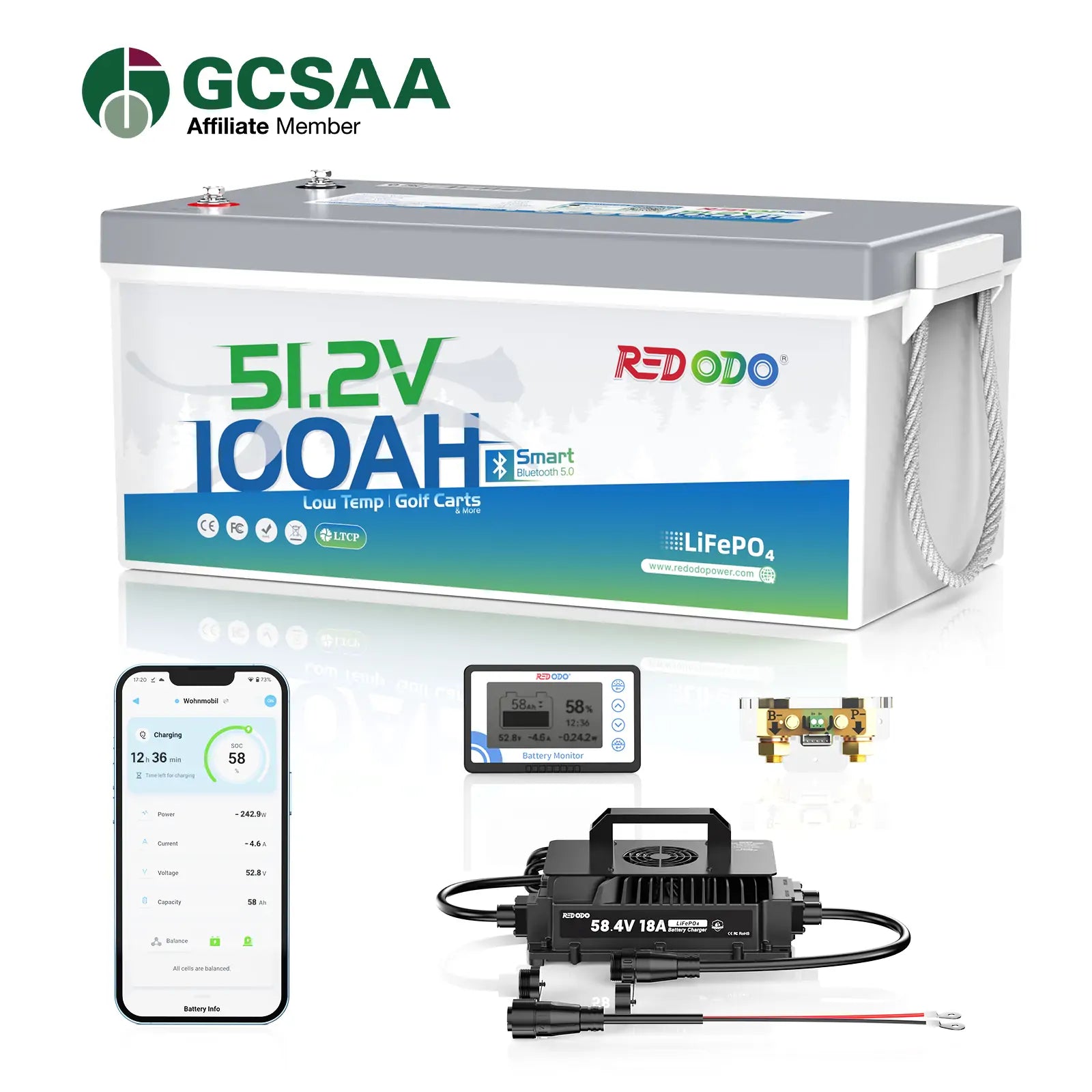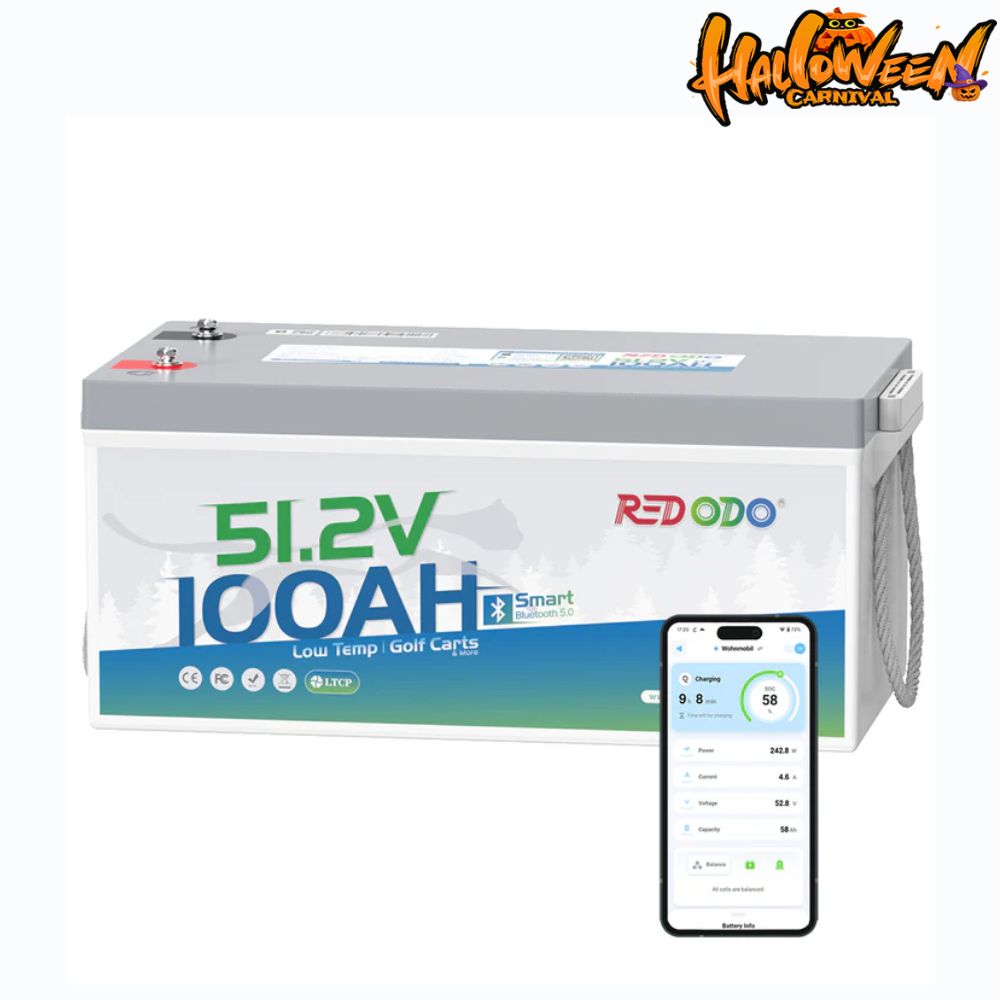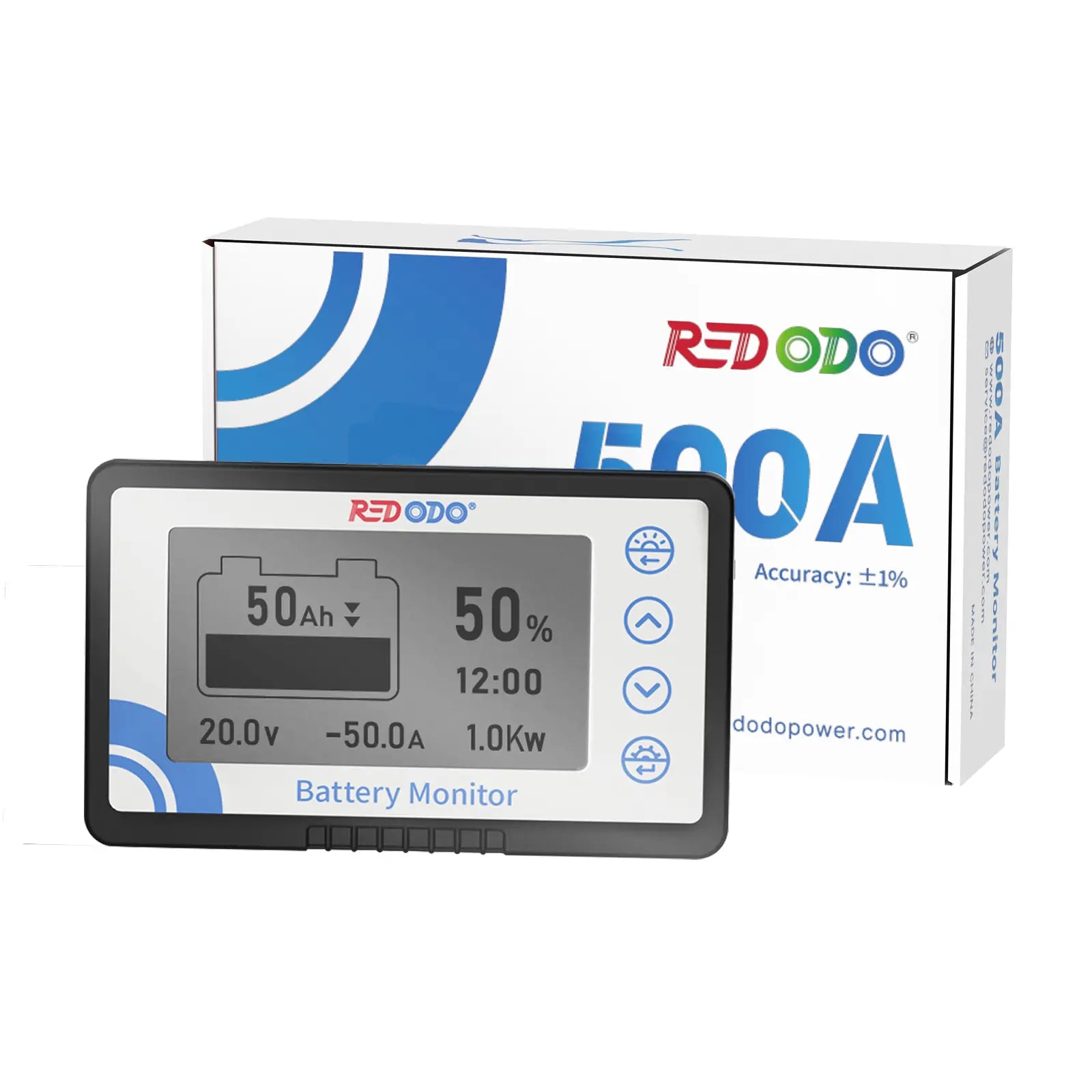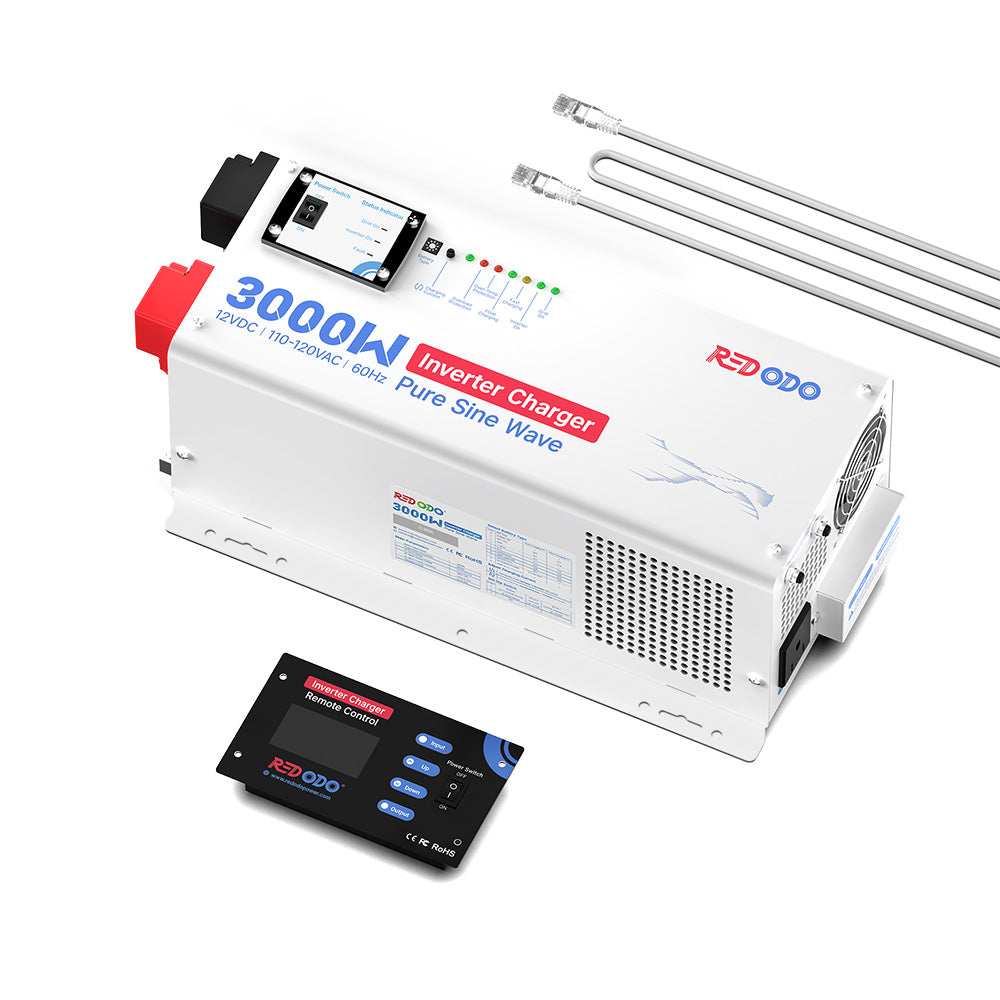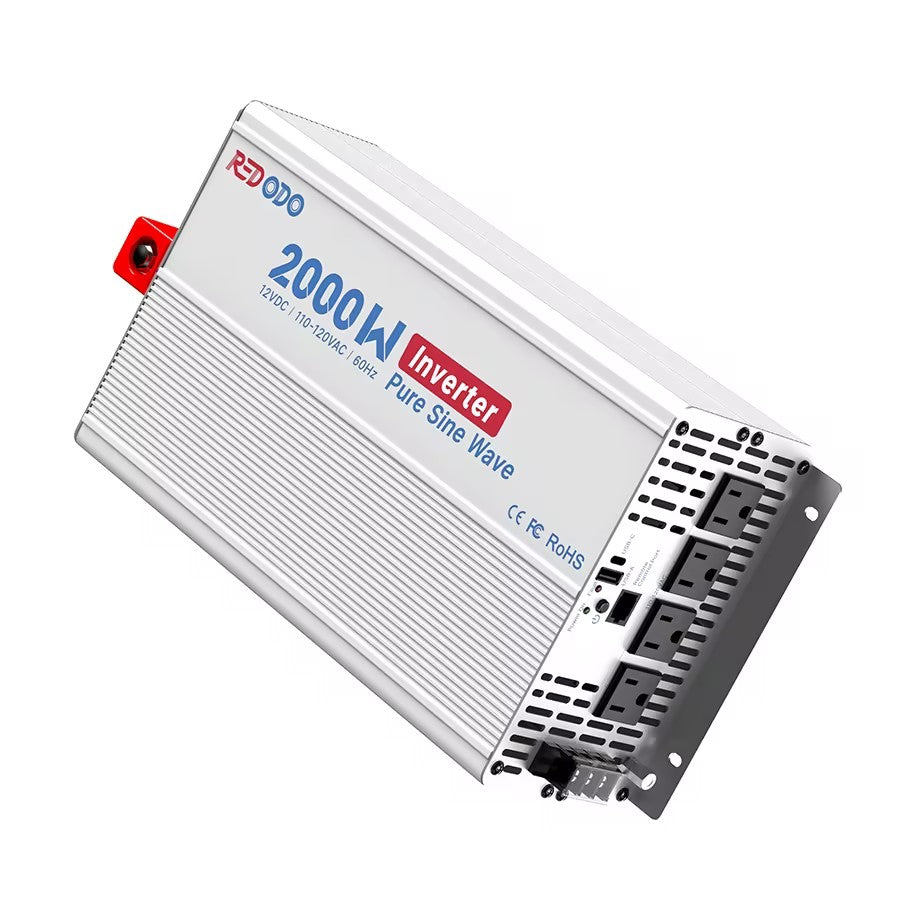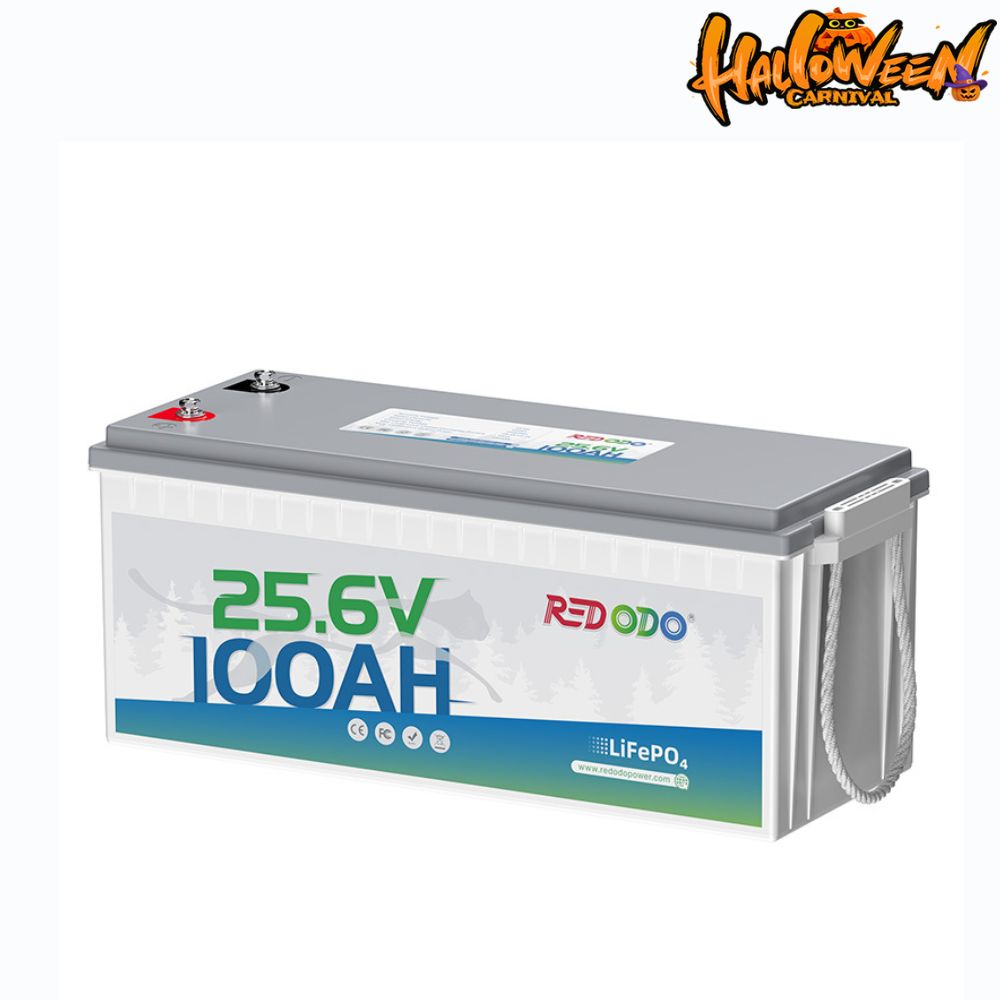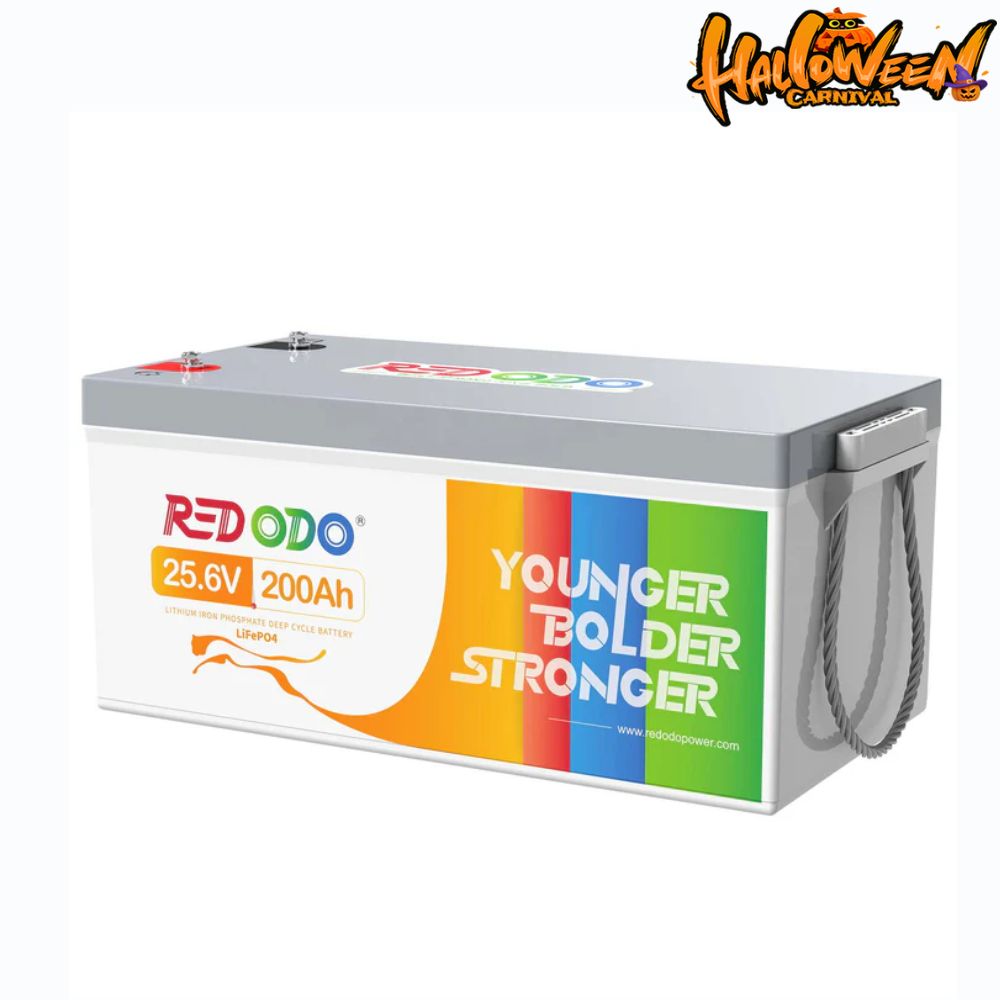How To Convert Your Golf Cart to Lithium Batteries?
Golf carts have come a long way from slow, lead-acid-powered vehicles to efficient electric machines that rival small EVs in performance. If you’re tired of sluggish acceleration, heavy batteries, and frequent maintenance, it might be time to convert your golf cart to lithium batteries.
In this guide, we’ll explain everything you want to know, from why lithium is better for golf carts to how you can safely and effectively complete your golf cart lithium battery conversion.
Table of Content
- Why Convert Golf Cart to Lithium Batteries?
- Key Factors to Consider Before Converting Golf Cart to Lithium
- Step-by-Step Guide: Convert Golf Cart to Lithium Batteries
- Upgrade with Redodo 48V Golf Cart Lithium Battery Conversion Kit
- How Much Does It Cost to Convert a Golf Cart to Lithium?
- FAQs About Golf Cart Lithium Conversions
Why Convert Golf Cart to Lithium Batteries?
Switching to lithium golf cart batteries is one of the smartest upgrades you can make for your golf cart. Here’s why thousands of owners are making the move:
1. Longer Lifespan
Lithium batteries typically last 3–5 times longer than lead-acid batteries. While traditional golf cart batteries may last around 500–800 cycles, a high-quality lithium battery can easily exceed 4,000 cycles, delivering years of consistent performance.
2. Lighter Weight
Lithium batteries weigh up to 70% less than lead-acid batteries. This weight reduction immediately improves acceleration, handling, and braking. You’ll notice your cart feels more agile and efficient right away.
3. Simplified Configuration
Traditional lead-acid setups require 6-8 individual 6V or 8V batteries wired together in series to create a 36V or 48V system. While a lithium setup often uses just one single 36V or 48V lithium battery pack. This means less cables, simple wiring, and without connection issues.
4. More Usable Energy
Lead-acid batteries can only use about 50% of their capacity before voltage drops significantly. Lithium batteries, on the other hand, can discharge up to 100%, giving you longer run times per charge.
5. Faster Charging
A full charge takes just 2–5 hours with lithium batteries, compared to 8–12 hours for lead-acid. The fast charging means less downtime and more time on the course, letting you get back to driving in just a few hours instead of waiting overnight.
6. Maintenance-Free
Get away from checking water levels or cleaning acid corrosion. Lithium batteries are completely maintenance-free, allowing you to focus more on driving and less on upkeep.

Key Factors to Consider Before Converting Golf Cart to Lithium
Voltage
Most modern golf carts run on 36V or 48V systems. Always match your lithium battery voltage to your cart’s original setup. If your cart uses a 48V lead-acid system, you’ll need to convert your 48V golf cart to lithium using an equivalent 48V lithium pack, which typically has a nominal voltage of 51.2V.
Battery Capacity (Ah)
This determines your range. For example, the Redodo 48V 100Ah lithium golf cart battery offers about 50 miles per charge, depending on terrain and load. For casual golfers, 50Ah may be enough, while heavy users might prefer 100Ah or more.
Battery Management System (BMS)
Lithium batteries require a built-in BMS to regulate voltage, prevent overcharge or over-discharge, and ensure safety. Always choose a battery with a reliable BMS.
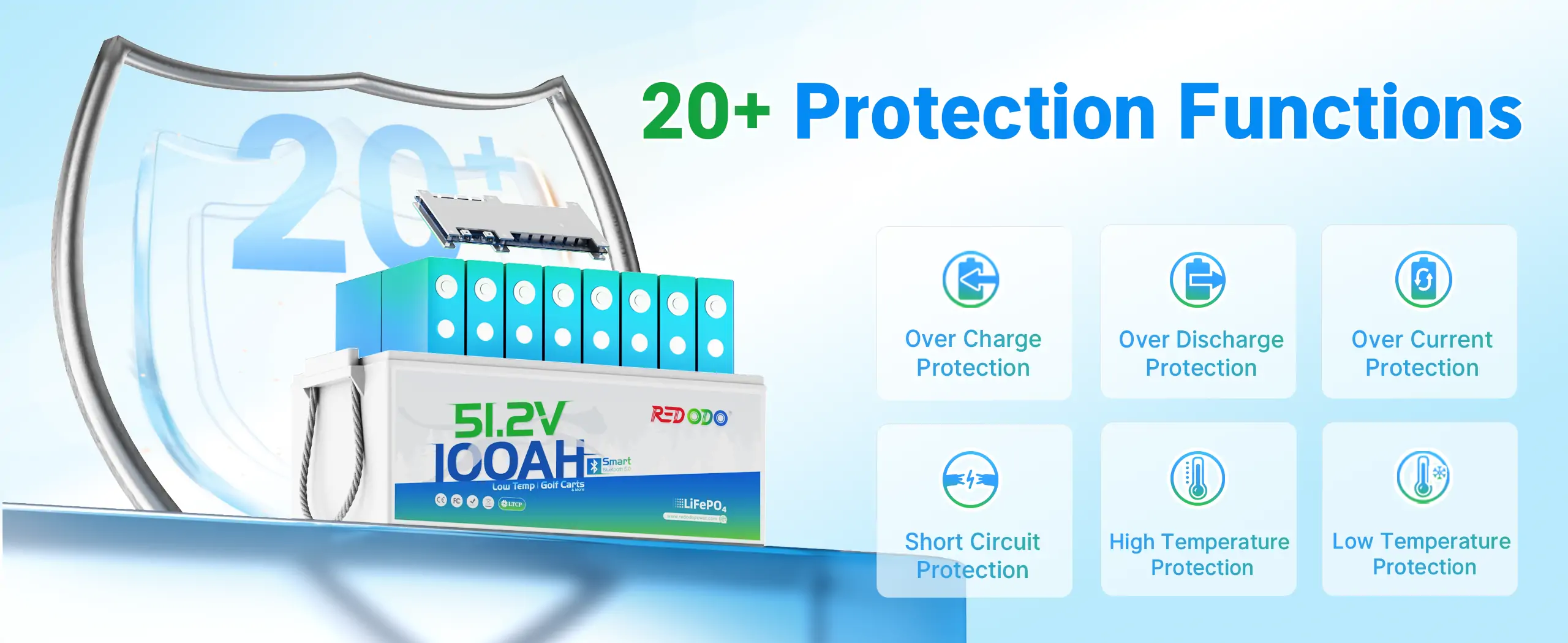
Step-by-Step Guide: Convert Golf Cart to Lithium Batteries
Ready to upgrade? Follow these steps to complete your lithium conversion safely and effectively.
Step 1: Safety First
Before you begin, wear insulated gloves and safety glasses. Turn off the key, remove the seat, and disconnect all power sources. Take photos of your existing wiring setup, this will help when reconnecting cables later.
Step 2: Remove Old Lead-Acid Batteries
Carefully remove all the old lead-acid batteries. Be cautious, as they are heavy and may contain corrosive acid residue. Clean the battery tray and check for rust or corrosion before installing your new setup.
Step 3: Plan Your Lithium Setup
Determine how many lithium batteries you’ll install. If you’re using multiple lithium batteries, connect the batteries in parallel (positive to positive, negative to negative) to increase capacity while keeping the voltage the same.
Step 4: Install New Lithium Batteries
Secure the lithium batteries into the tray using proper brackets or tie-downs. Connect the cables according to the photos you took earlier, ensuring correct polarity. Double-check all terminal connections for tightness.
Step 5: Replace the Charger
Now, upgrading your charger. Lead-acid chargers are not compatible with lithium batteries. You’ll need a lithium battery charger that matches your system voltage (e.g., 58.4V charger for 48V lithium batteries).
Step 6: Check Battery Meter Compatibility
If your cart’s meter is designed for lead-acid batteries, it won’t display lithium voltage accurately. You can replace it with a lithium-compatible voltmeter or install a Bluetooth battery monitor for real-time tracking.
Step 7: Test Drive the Cart
Once everything is connected, power on the cart and take a short drive. Check for smooth acceleration, proper voltage, and no error codes. Monitor the battery performance using your BMS or Bluetooth app.
Upgrade with Redodo 48V Golf Cart Lithium Battery Conversion Kit
If you’re ready to make the switch for your 48V golf cart, check out the Redodo 48V Golf Cart Lithium Battery Conversion Kit, designed for easy installation and superior performance.
- Wide Compatibility: Compatible with most Club Car, EZGO, and Yamaha golf carts, making it the perfect upgrade for anyone seeking better performance and lower maintenance.
- All-in-One Kit: Includes a 48V 100Ah lithium golf cart battery, a 48V battery charger, and a battery monitor with shunt, giving you everything needed for conversion while saving more money.
- Smart Bluetooth Monitoring: The Bluetooth 5.0 technology allows you to check voltage, capacity, and remaining runtime directly from your phone in real-time.
- Compact Design: Space-saving structure with dimensions of L20.47 × W10.55 × H8.66 inches. Weighs only 82 lbs, over 60% lighter than lead-acid batteries. Perfect for clean and easy installation.
- Long Lifespan: Built with top-grade LiFePO4 cells, delivering over 4,000 cycles for years of reliable performance.
- Upgraded BMS Protection: The advanced BMS offers 20+ protection, including low-temperature charging cutoff for enhanced safety and durability.
⚡️Special Offer:
The Redodo’s 48V lithium golf cart conversion kit is now available for only $899 (Regularly $1,099). Upgrade your golf cart to lithium and save $200 today!

How Much Does It Cost to Convert a Golf Cart to Lithium?
Battery Cost
The main expense is the lithium battery itself. A 48V lithium golf cart battery pack generally costs between $800 and $2,000, depending on brand and capacity.
While this initial investment is higher than lead-acid batteries, lithium’s lifespan of 8–10 years and its maintenance-free design make it more cost-effective in the long run.
Charger Upgrade
If your current charger is made for lead-acid batteries, you’ll need a lithium-compatible charger, which typically costs $150–$300.
Accessories and Installation
You may also need to budget for accessories such as cables, mounting brackets, or a battery monitor, which together can add $50–$200. If you prefer professional installation, labor costs may range from $100–$300.
Although the upfront cost may seem steep, converting to lithium drastically reduces long-term expenses, the benefits including:
- Eliminate the need for frequent replacements every few years
- Require no maintenance or water refills
- Offer higher energy efficiency, lowering electricity costs for charging
Related Reading: How Much Does it Cost to Replace Golf Cart Batteries?
FAQs About Golf Cart Lithium Conversions
Do I need to upgrade my golf cart controller or motor?
In most cases, no. Lithium batteries deliver consistent voltage throughout discharge, which actually helps your existing motor perform better. However, high-performance users might choose to upgrade for even faster acceleration.
Can I mix lithium and lead-acid batteries?
No. Mixing battery chemistries can cause voltage imbalances and safety issues. Always replace your entire pack with lithium.
How long does a lithium battery last in a golf cart?
A high-quality lithium battery can last 8–10 years or more with proper use, offering thousands of charge cycles. Redodo lithium golf cart batteries can last up to 10 years.
Conclusion
Converting your golf cart to lithium batteries is one of the smartest upgrades you can make to boost performance, extend lifespan, and eliminate maintenance hassles. With lighter weight, faster charging, and simplified connections, lithium batteries deliver a smoother, more efficient ride and longer runtime on every charge.
By following the key steps to convert your golf cart to lithium, you can easily upgrade from old lead-acid batteries to more efficient and long-lasting lithium power. Make the switch with Redodo’s Golf Cart Lithium Battery and enjoy the freedom to go farther with less maintenance and downtime.
Read More:
What's the Best Battery for Golf Carts?
Can I Use 4 12-Volt Batteries in A 48 Volt Golf Cart?
What's the Difference Between 48V and 51.2V Golf Cart Batteries?

Redodo

Redodo
Join Redodo
Related Post

How To Convert Your Golf Cart to Lithium Batteries?

What Is the Best Battery for Motorhome?

What Is the Smallest 12V Lithium Battery? Redodo 100Ah Mini Battery Review

Build A DIY Solar Power Generator with Lithium Battery


